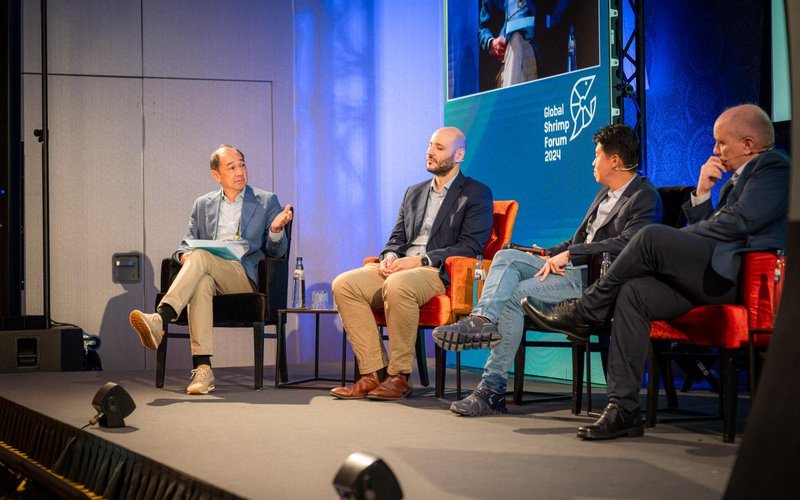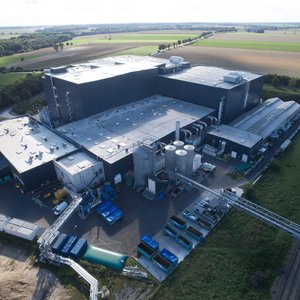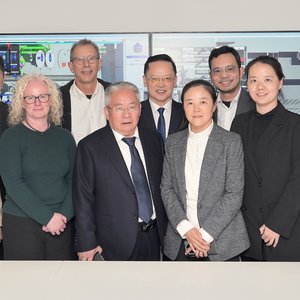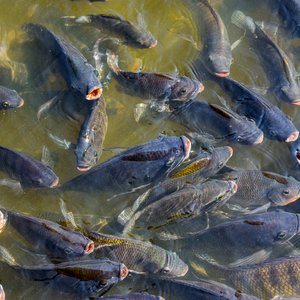In recent years, high inflation and rising feed ingredient prices have driven up shrimp feed costs. At the Global Shrimp Forum that took place in September in Utrecht, feed stakeholders discussed how much these costs have actually increased and how they affected farmers.
“The cost of ingredients has risen sharply, and while feed manufacturers have raised their prices, it hasn’t kept pace with these increases. As a result, profit margins for feed manufacturers are tighter than ever before,” said Victor Suresh, technical director for Growel Feeds Private Limited.
With feed manufacturers acting as bankers in many countries, this situation has affected the business. “The credit from the feed manufacturers is an important part of shrimp production economics. There has been an increase in interest rates which reduced profit margin, therefore, feed manufacturers would offer a higher discount for cash sales. However, the system is going to lose some of the money in this process, and that's going to affect the sector eventually,” Suresh said.
However, credit comes with risks. “If you have a short-term crisis, for instance, disease outbreaks, the first thing that always happens is farmers turning to us for credit. Credit is a dangerous tool because it comes at a cost. It is a solution for a short period and we need to look for long-term solutions,” Henrik Aarestrup, vice president LatAm, Shrimp & Hatchery, BioMar, said.
“We have been through these bottlenecks in the past, and when you only go for price, you always lose something. Farmers need to go on cost efficiency,” said Raul Fernando Garcia Abad, global commercial director at INVE Aquaculture.
“In the coming years, there will be a race to decrease the cost of production. It can be by training, technology, precise farming, or through feed innovation, but we have to help farmers drive their costs down. On the other side, we need to support value-chain collaborations which can help them to race the demand and raise the prices of the shrimp that they are selling,” Aarestrup said.
Expected decline in feed ingredients costs
In 2022, shrimp feed prices surged by 20-30% due to rising corn, soy and wheat prices. Looking ahead, however, the outlook seems more optimistic. Carlos Mera, managing director, Agri-Commodities Market Research, forecasts lower soybean and corn prices, with a 15% drop in soybean prices over the next six months.
The three largest soybean producers, Brazil, the US, and Argentina, are expected to have a good crop: a record soybean crop is expected in the US and Brazil is still expanding its agricultural area (1.5%). “China as the biggest buyer has reduced its annual soybean imports from 10% to 1.8% in the past seven years due to African swine fever, COVID and the recent economic deceleration,” Mera explained. In this context, Mera forecasts massive crops, less demand and lower prices for soybeans, even reaching USD 850 per bushel at some point.
Mera predicts a knock-on effect on soy meal and shrimp prices. “I expect shrimp feed prices to drop by around 10%, as fishmeal prices are also likely to fall and corn is already at a low,” Mera said.
Feed manufacturers acknowledge the potential for price relief but caution that improvements will vary by region. “We do expect some relief from lower raw material costs, but the timeline will differ across countries,” said Aarestrup.
“Some countries will receive the new raw materials earlier than others. Some countries have import restrictions which means that we, as a feed manufacturer, will have to stock up for a longer time which is an advantage when prices rise, but it's a disadvantage when they fall. For other raw materials, there are local patterns such as fishmeal from trimmings that also play a role. Other factors such as countries where the feed is sold through distributors, especially in Southeast Asia, create a lag in the process,” Aarestrup explained.
Carbon footprint in shrimp: A closer look
Another key topic for the feed industry that was discussed was sustainability, which is increasingly important in shrimp farming. Jorge Díaz, sustainability director at Skretting, emphasized that feed production typically accounts for 70-80% of total emissions. Major contributors include vegetable proteins like soybean meal and the deforestation linked to their production with notable differences in carbon emissions between countries.
“Vietnam's shrimp production has a carbon footprint 20% higher than Ecuador's, largely due to the sourcing of soybean meal from Argentina. However, by switching the origin of soy from Argentina to Brazil or the US, with lower land-use emissions, Vietnam’s carbon footprint can be reduced by 9% and 50%, respectively. Similarly, Ecuador’s emissions could drop by nearly 30% if ingredients were sourced from certified, deforestation-free sources in Brazil, such as ProTerra-certified suppliers,” Díaz explained.
However, “the best tool the industry has to reduce the carbon footprint is FCR,” said Helene Ziv-Douki, president and group leader at Cargill Aqua Nutrition. “When you improve your FCR you are doing more with less raw materials, with less footprint. The real levers we have are the on-farm inputs and the FCR.”
Carlos Díaz, CEO of BioMar, added more conditions to the equation, according to results from a Life Cycle Assessment (LCA) for Ecuadorian shrimp which revealed a carbon footprint similar to that of Norwegian salmon (5.2 vs 4.8) on average. “We also found that the farming conditions are more important in shrimp than in fish and salmon,” Díaz said. “Optimizing feed with sustainable raw materials, the carbon footprint can be reduced to 4.5 Kg CO2 eq/Kg live shrimp. Improving FCR by 20% can reduce it further to 3.5 and combining it with green power could bring it down to 2.1.”










